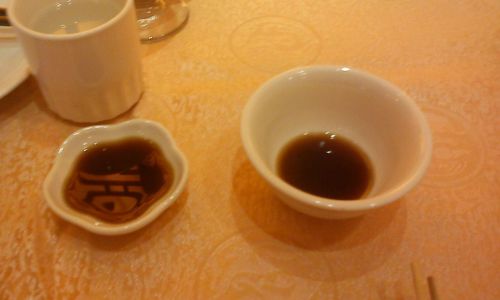Table of content
- Clarity and Color
- Bottling and Labeling
- Sediment and Precipitate
- Freshness and Authenticity
- Complexity and Balance
- Off-Notes and Contaminants
- Balance and Harmony
- Depth and Complexity
- Finish and Aftertaste
- Geographic Indications
- Certifications and Standards
- Producer Information
- Temperature and Humidity
- Light Exposure
- Container Type
- Opening and Usage
Introduction
Vinegar, a staple in countless cuisines worldwide, serves as both a flavor enhancer and a preservative. Its versatility makes it indispensable in kitchens, from salad dressings and marinades to pickling and preserving foods. However, not all vinegars are created equal. Discerning the quality of vinegar can be challenging, especially with the myriad of varieties and brands available in the market. This guide aims to provide a comprehensive understanding of how to identify high-quality vinegar, ensuring that your culinary endeavors are enhanced by the best possible ingredient.

Understanding Vinegar Basics
Before diving into the specifics of quality discernment, it’s crucial to understand the basics of vinegar. Vinegar is an acidic liquid produced through the fermentation of ethanol by acetic acid bacteria. The primary ingredient varies based on the type of vinegar:
- Apple Cider Vinegar (ACV): Made from fermented apple cider.
- Balsamic Vinegar: Traditionally produced from Trebbiano grapes in Modena, Italy.
- Distilled White Vinegar: Derived from fermented grain alcohol.
- Malt Vinegar: Made from fermented barley.
- Rice Vinegar: Produced from fermented rice.
- Red Wine Vinegar: Fermented from red wine.
- White Wine Vinegar: Fermented from white wine.
- Cider Vinegar: Similar to ACV but made from a broader range of apple varieties.
- Infused Vinegars: Base vinegars infused with herbs, fruits, or spices.
Each type of vinegar has its unique flavor profile and culinary uses. Understanding these differences is the first step in discerning quality.

Visual Inspection
One of the simplest yet effective methods of assessing vinegar quality is through visual inspection. Here’s what to look for:
Clarity and Color
- Clarity: High-quality vinegars are generally clear, with minimal sediment or cloudiness. Cloudiness can indicate incomplete fermentation or storage issues. However, some traditional vinegars, like balsamic, may have a natural, slight cloudiness due to their production process.
- Color: The color of vinegar can vary widely based on its type and source. For instance, red wine vinegar should have a deep, rich red hue, while apple cider vinegar might range from pale yellow to amber. The color should be consistent and uniform throughout. Discoloration, dark spots, or an uneven color can be signs of poor quality or spoilage.
Bottling and Labeling
- Bottle Condition: Examine the bottle for any signs of leakage, dents, or cracks. A well-sealed, clean bottle is a good indicator of care taken during packaging and storage.
- Label Information: Look for detailed information on the label, including the type of vinegar, ingredients, country of origin, and certification marks (e.g., USDA Organic, Non-GMO). High-quality vinegars often come with extensive labeling that provides insight into their production process and sourcing.
- Expiration Date: Check for an expiration or best-before date. While vinegar is a fermented product with a long shelf life, freshness impacts its flavor and quality.
Sediment and Precipitate
- Sediment: Some vinegars, particularly those aged or made through traditional methods, may have a natural sediment at the bottom. This sediment is usually harmless and can even add complexity to the vinegar’s flavor. However, an excessive amount of sediment or particles floating in the liquid can be a sign of poor filtration or storage conditions.
- Precipitate: Similar to sediment, precipitate is a solid material that forms in a solution. In vinegar, it can be due to crystallization of certain compounds. Small amounts of precipitate are usually acceptable, but large clusters can indicate a problem.
Olfactory Assessment
The nose knows, and this saying holds true when assessing vinegar quality. Aroma is a critical indicator of vinegar’s freshness, purity, and authenticity.

Freshness and Authenticity
- Freshness: High-quality vinegars have a fresh, clean aroma that reflects their source. For example, apple cider vinegar should smell like apples, while balsamic vinegar should have a sweet, fruity, and slightly tart scent. An old or stale vinegar will have a faded, flat aroma.
- Authenticity: The aroma can also help verify the vinegar’s authenticity. If a red wine vinegar smells more like apple cider, it might be a blend or mislabeled.
Complexity and Balance
- Complexity: High-quality vinegars often have a layered, complex aroma with multiple notes. This complexity adds depth to dishes and enhances their overall flavor.
- Balance: The aroma should be balanced, neither too strong nor too weak. An overly pungent vinegar can overpower dishes, while a weak one might not add enough flavor.
Off-Notes and Contaminants
- Off-Notes: Be wary of vinegars with off-putting aromas, such as mold, mildew, or chemicals. These can indicate contamination or improper storage.
- Contaminants: Sometimes, vinegar can pick up odors from its environment, especially if stored in poor conditions. Avoid vinegars that smell like plastic, paint, or other chemicals.
Taste Evaluation
Taste is the ultimate test of vinegar quality. A good vinegar should have a balanced, harmonious flavor that complements dishes rather than overpowers them.
Balance and Harmony
- Acidity: Vinegar’s acidity is measured in percent acetic acid. Different types of vinegars have varying acidity levels. A well-balanced vinegar will have an acidity that complements its other flavors. Too much acidity can make it harsh, while too little can make it flat.
- Sweetness and Tartness: Many vinegars have a balance of sweetness and tartness. Balsamic vinegar, for instance, should have a sweet, fruity taste with a hint of tartness. Apple cider vinegar should also have a slightly sweet, apple-like flavor balanced by acidity.
Depth and Complexity
- Depth: High-quality vinegars often have a rich, deep flavor that builds on the palate. This depth can come from the vinegar’s source ingredients, aging process, or additional flavors added during production.
- Complexity: Complex vinegars have multiple layers of flavor that unfold as you taste them. This complexity can add a sophisticated element to dishes, making them more interesting and enjoyable.
Finish and Aftertaste
- Finish: The finish refers to the lingering sensation on your palate after swallowing the vinegar. A high-quality vinegar will have a clean, lingering finish that enhances the overall experience.
- Aftertaste: The aftertaste should be pleasant and balanced, neither too strong nor too weak. A lingering, unpleasant aftertaste can indicate poor quality or contamination.
Checking for Authenticity and Origin
In today’s global market, it’s essential to verify the authenticity and origin of the vinegar you’re buying.

Geographic Indications
- Protected Geographic Indications (PGIs) and Protected Designations of Origin (PDOs): These are international labels that certify that a product has been produced, processed, and prepared in a specific geographical area using traditional methods. For instance, Traditional Balsamic Vinegar of Modena (Aceto Balsamico Tradizionale di Modena) carries a PDO, ensuring its authenticity and quality.
Certifications and Standards
- Organic Certifications: Organic vinegars are produced without synthetic fertilizers, pesticides, or genetically modified organisms (GMOs). Look for certifications like USDA Organic or European Union Organic.
- Fair Trade Certifications: These certifications ensure that the vinegar’s production supports fair labor practices and sustainable agriculture.
- Non-GMO Certifications: For those concerned about GMOs, look for Non-GMO Project Verified labels.
Producer Information
- Producer Reputation: Research the producer or brand. Established producers with a good reputation are more likely to produce high-quality vinegars.
- Transparency: Look for producers that are transparent about their sourcing, production methods, and ingredients. This transparency builds trust and ensures quality.
Storage and Shelf Life
Proper storage is crucial for maintaining vinegar quality. Even the best vinegars can degrade if not stored correctly.
Temperature and Humidity
- Temperature: Store vinegar in a cool, dark place. High temperatures can accelerate chemical reactions, altering the vinegar’s flavor and aroma.
- Humidity: Avoid storing vinegar in humid environments, as moisture can cause corrosion and contamination.
Light Exposure
- Light Sensitivity: Vinegar can degrade when exposed to direct sunlight. Store bottles in opaque containers or in cabinets away from windows.
Container Type
- Glass Bottles: Glass is the best material for storing vinegar, as it doesn’t react with the vinegar’s acidic content.
- Plastic Bottles: If using plastic, ensure it’s BPA-free and specifically designed for vinegar storage. Avoid long-term storage in plastic, as it can leach chemicals into the vinegar.
Opening and Usage
- First Use: Once opened, vinegar’s shelf life can decrease, especially if exposed to air and contaminants. Use a clean spoon or utensil to avoid cross-contamination.
- Refrigeration: While not necessary






0 comments